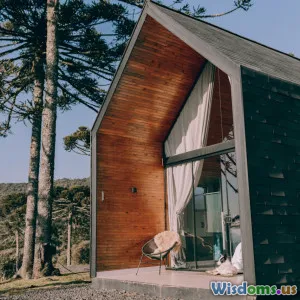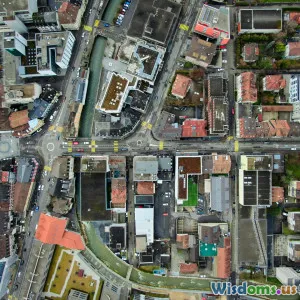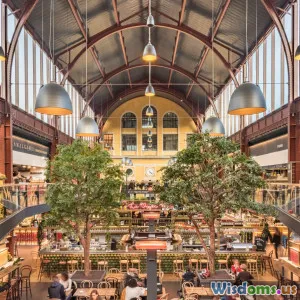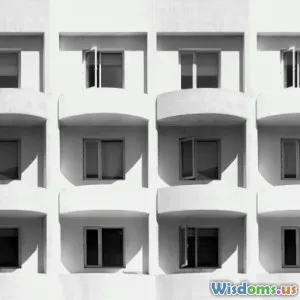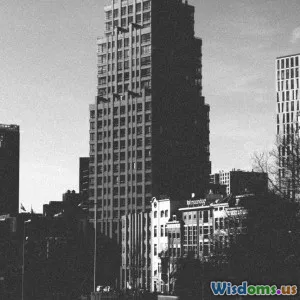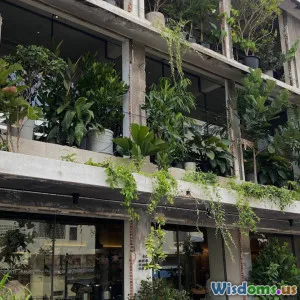
Integrating Ecology into City Design
8 min read Explore how ecological principles transform urban design for healthier, sustainable cities. (0 Reviews)
Integrating Ecology into City Design: Creating Sustainable Urban Futures
Urban environments are often considered concrete jungles – vast expanses of buildings, roads, and infrastructure where nature takes a back seat. Yet, as cities continue to expand, the need to weave ecology into their very fabric becomes imperative. Integrating ecology into city design isn’t just an environmental fad; it’s a pivot toward sustainability, human wellbeing, and resilience amid global climate challenges.
The Urban Ecology Imperative
Today, over 55% of the world's population lives in urban areas, a figure projected to rise to 68% by 2050, according to United Nations data. This densification presents urgent questions: How can cities reduce their ecological footprint? How can they harmonize development with environmental preservation? The answers lie in adopting urban ecology principles - designing cities that function more like natural ecosystems.
What Does Integrating Ecology into City Design Mean?
Integrating ecology involves designing urban environments that emulate the complexity, diversity, and self-regulating behaviours of natural ecosystems. It promotes biodiversity, improves air and water quality, mitigates urban heat island effects, and manages stormwater naturally. This integration moves beyond green parks or tree-lined streets to systemic incorporation of ecological processes across all urban elements: buildings, roads, open spaces, and community networks.
Key Benefits
- Enhanced Biodiversity: Supporting native plants and animals within the urban landscape sustains ecological richness.
- Climate Resilience: Natural features reduce flooding and buffer heat waves, protecting human welfare.
- Health Improvements: More green and blue spaces encourage recreation and mental wellbeing.
- Energy Efficiency: Natural shading and ventilation lower energy use in buildings.
Practical Strategies for Ecologically-Informed Urban Design
1. Green Infrastructure as Nature’s Toolbox
Green infrastructure uses vegetation and soil to manage rainwater, reduce pollution, and create habitat corridors. Examples include:
- Bioswales & Rain Gardens: Depressions planted with native vegetation that capture runoff, filter pollutants, and recharge groundwater.
- Green Roofs and Walls: Roofs covered in plants that improve insulation, reduce heat absorption and provide small-scale habitats.
- Urban Forests: Strategically planting trees to cool urban heat islands, sequester carbon, and enhance air quality.
Example: Singapore's "Garden City" initiative showcases extensive green infrastructure literally integrated into skyscrapers and streetscapes, achieving cooler, more livable urban conditions.
2. Designing Multi-Functional Landscapes
Space is scarce in cities, so public spaces must serve multiple ecological and social functions. Parks can double as flood plains, playgrounds as pollinator gardens, and green corridors as transport routes for wildlife.
Example: The High Line in New York City transformed an abandoned rail line into an elevated park featuring native plants that support local pollinators, improve air quality, and offer residents unique interaction with nature.
3. Promoting Biodiversity Through Native Plant Selection
Choosing native species over exotics ensures higher ecological compatibility. Native plants support local insects and birds, maintaining healthy food chains.
Case in Point: Portland, Oregon, emphasizes native planting in public landscaping, contributing to the thriving urban coho salmon habitat through naturalized waterway buffers.
4. Hydrological Sensitivity and Water Sensitive Urban Design (WSUD)
Managing water wisely involves using permeable surfaces, retention ponds, and swales to mimic natural water cycles. This reduces flooding and protects waterways from contamination.
Example: Melbourne, Australia's incorporation of WSUD elements, such as stormwater harvesting and wetlands in parks, has reduced runoff pollution entering local rivers significantly.
5. Biophilic Architecture: Bringing Nature Indoors
Biophilic design incorporates natural light, ventilation, water features, and vegetation within buildings. It enhances occupant health and reduces building energy consumption.
Notable project: The Khoo Teck Puat Hospital in Singapore features extensive greenery and natural ventilation, improving patient recovery rates and minimizing energy use.
6. Community Engagement and Ecological Stewardship
Ecological urban design succeeds best with involvement from local communities who maintain green spaces and participate in stewardship.
Example: The "Edible City" movement embeds community gardens within urban neighborhoods, fostering local food production and social cohesion, as seen in Detroit’s Grow Detroit’s Greener Gardens.
Challenges and Solutions
Integrating ecology in urban design does face hurdles:
- Competing Land Uses: Developers prioritize profit, often sidelining ecological concerns.
- Regulatory Barriers: Zoning and building codes may not support innovative green infrastructure.
- Maintenance: Ecological spaces require ongoing care, which can be resource-intensive.
Innovative policy tools like incentives for green building certifications (LEED, WELL), urban ecological master plans, and public-private partnerships can help overcome these difficulties. For instance, Vancouver’s Greenest City Action Plan aligns policy with ecological urban development to meet ambitious targets.
The Future is Ecological Urbanism
The future of urban design lies in ecological urbanism—a multidisciplinary approach marrying ecology, landscape architecture, and city planning. Emerging technologies, like remote sensing for vegetation monitoring or AI-driven water management, promise new ways to optimize ecologically integrated designs.
As climate change intensifies, cities that embrace ecological design principles will be better prepared to withstand disruptions and provide healthier, happier living conditions. The task is immense but achievable.
Conclusion: Towards a Symbiotic Urban Ecosystem
Integrating ecology into city design transforms urban spaces from ecological deserts into vibrant, resilient ecosystems. It offers profound benefits — economically, environmentally, and socially — while fostering harmonious coexistence between people and nature. Drawing inspiration from cities like Singapore, Portland, and Melbourne, urban planners and architects have powerful models to emulate.
In embracing ecological principles, cities do not merely aim to green their landscapes; they cultivate living systems that sustain generations to come. As individuals, communities, and policymakers, recognizing the urgency and opportunity in this integration invites a new era where cities thrive as balanced ecosystems.
Are we ready to design cities that work with nature rather than against it? The time to act is now.
Rate the Post
User Reviews
Popular Posts














